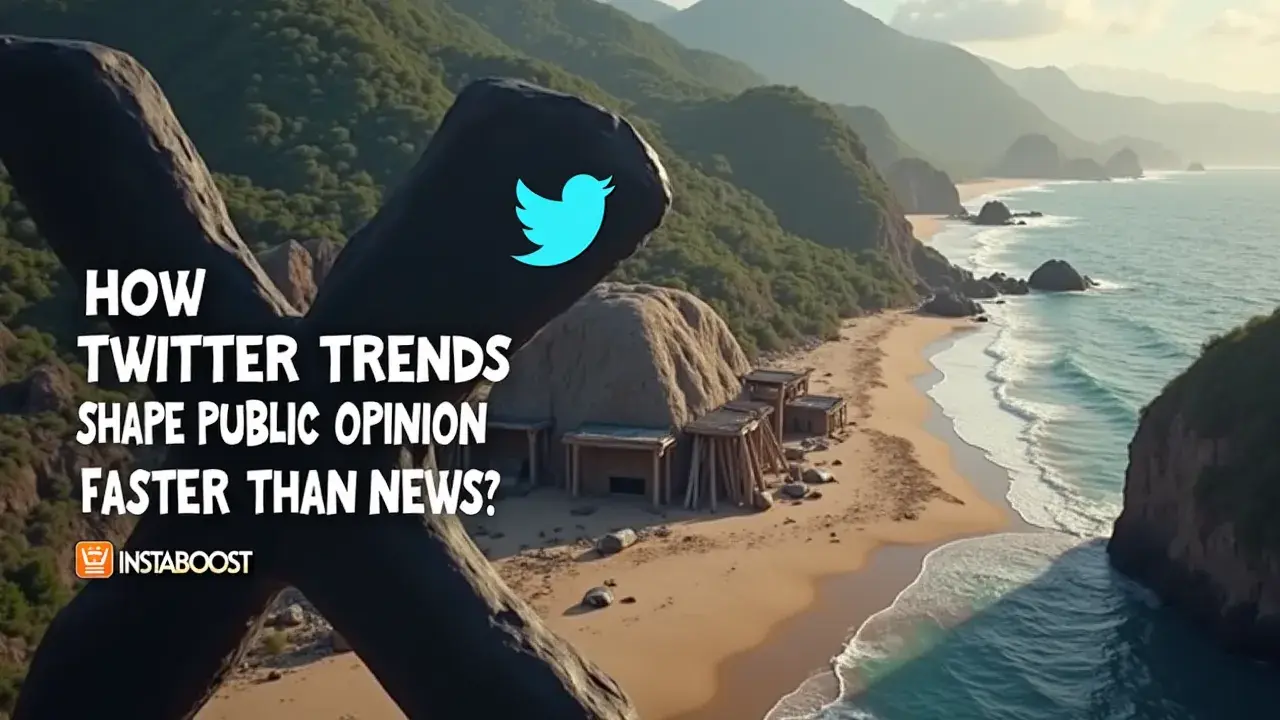How X (Twitter) Trends Shape Public Opinion Faster Than News?
Rapidly circulating trends on X (Twitter) can steer public opinion by concentrating attention on specific narratives and amplifying voices in real time. Hashtags and viral posts elevate topics quickly, often outpacing traditional news cycles in setting the agenda and shaping cultural conversations. When trends reflect broad engagement rather than isolated bursts, their influence is stronger. The smart path is to track velocity, breadth of participation, and sentiment to gauge which trends genuinely move discourse.
The Velocity of Influence: How Hashtags Outpace Headlines
For a long time, big news outlets were the ones picking the stories everyone talked about. But with Twitter, that’s really shifted. When a hashtag catches on or a video spreads, it can reach millions of people before most reporters even notice. It isn’t only about speed, either. Now, anyone who has a phone and a thought can share it, and sometimes that’s enough to set off a whole new topic that people start caring about.
This back-and-forth online means trending topics don’t just reflect what people are interested in – they end up steering the whole conversation, sometimes in directions no one expected. Meanwhile, newsrooms are still running things through their regular processes – fact-checking, editing, all that – so a lot of the time, they’re responding to stories that have already taken off on Twitter instead of leading the way.
That’s probably why you see searches like “Twitter influence on public opinion” popping up all over. People are starting to see that it isn’t only journalists setting the agenda now; it’s more about how fast and how intensely these online discussions move.
That’s probably why you see searches like “Twitter influence on public opinion” popping up all over. People are starting to see that it isn’t only journalists setting the agenda now; it’s more about how fast and how intensely these online discussions move.
And that shift isn’t just technical. It’s actually changing how we figure out what matters and what we believe about the world. These days, there’s even advice floating around – about how you can get noticed on X – which just shows how central this platform has become. By the time the evening news covers something, it feels like the public has already had the main arguments, and where it goes from there is less predictable than it used to be.

The Unfiltered Test of Believability
We posted the same thing eight different ways before one version finally got some attention – and, interestingly, it wasn’t the one we thought was clever. That’s how things usually take off on Twitter. Authority doesn’t really come from quoting experts or using polished headlines like it does in traditional media. What matters is whether people respond to it right away, if it gets noticed and picked up. Once a hashtag starts circulating, the source isn’t as important; a tweet from a well-known journalist can sit quietly while something typed up at the kitchen table takes off, as long as it feels genuine to people in that moment.
Users are quick to notice when something feels staged or artificial, and they usually push back. That’s probably why Twitter has a way of highlighting what people actually think or believe, even if the language is rough or the thought isn’t fully formed. In older newsrooms, credibility depends on an outlet’s history and the rules they follow. On Twitter, you see it in how fast people react and share things, and how quickly others join in – sometimes it’s almost as if you can expand your X network just by being in the right place at the right time. It’s a different system – a feedback loop that moves in real time, which lets you watch opinion form almost as it happens. Sometimes this means an idea or story gets a wave of support within minutes, and you’ll see it spread before traditional news outlets have even registered it. For anyone trying to understand how public opinion moves now, this is what credibility looks like: messy, immediate, and shaped by whoever is paying attention.
Cutting Through the Noise: Strategy for Navigating Trends
You probably don’t need more features – you need more clarity about what you’re actually trying to say. There’s this thing that happens on Twitter where a trend can take off so quickly that it shapes what people think, even before any reliable news comes out. If you’re always focused on chasing the latest tool or trend, it’s easy to get overwhelmed and lose track of what you actually want to communicate. The most important thing is to figure out what matters to you and make sure it cuts through all the extra noise online. It’s easy to get distracted by new analytics platforms, scheduling tools, or even a likes bundle for Twitter, or whatever’s supposed to make sharing easier, but none of that really helps if your message isn’t clear in the first place.
The people who actually influence these conversations tend to have a point of view that’s easy to recognize. They don’t try to say everything – they find a single angle that fits the moment and explain it so anyone can understand or share it without a lot of extra work. Big hashtags like #MeToo or #BlackLivesMatter didn’t catch on because someone had a clever tech setup – they worked because everyone immediately understood what they meant and could see where they fit in. If you want to take part in any meaningful way, it’s probably more helpful to take something complicated and say it in a way that’s hard to misunderstand. Social media moves fast, but if your message is clear, it stands a better chance of sticking around, even when the conversation keeps shifting.
The Limits of Virality: Are We Really Being Heard?
Sometimes I think about how it feels to share your thoughts online, especially on Twitter, and wonder if anyone actually hears them. Trends pop up fast – one day hardly anyone is talking about a topic, and the next day, it’s everywhere. But there are so many tweets – some thoughtful, some well-researched, some just someone being honest – that end up buried, barely noticed.
I’ve noticed too that sometimes people comment on how posts can rack up what look like organic-looking views on X, yet still go largely ignored in conversation. It’s easy to assume whatever’s trending is what most people care about, but a lot of it gets there because the system rewards things that get a reaction, not things that are necessarily true or important. A hashtag can catch on and suddenly shape what everyone’s talking about, even if nobody’s really checked whether the story behind it is accurate. I know traditional news isn’t perfect, but at least there are editors and a process before something is presented as fact.
On Twitter, it’s usually the stuff that makes people upset, or the takes that can be boiled down to a quick line, that gets pushed to the top. After a while, you start to associate whatever’s trending with what’s actually happening in the world, and it’s easy to forget that most people probably haven’t even seen it. That’s the thing – I worry about letting algorithms steer the conversation, instead of slowing down to look at what really matters. It’s not so much about keeping up with every headline, but figuring out which things deserve your attention at all, and that’s not something an algorithm can tell you.















